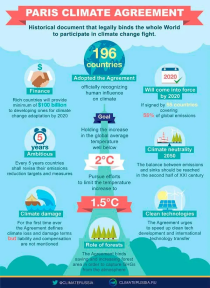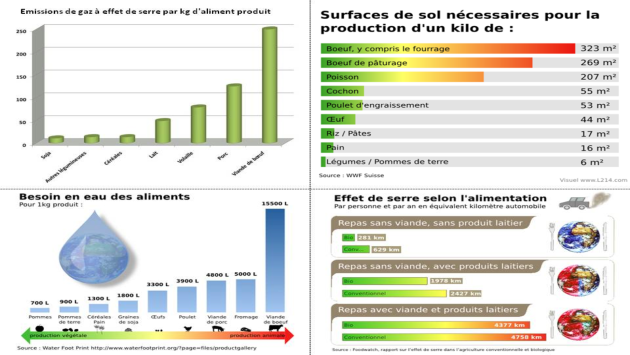How to limit your carbon footprint?
Paris climate plan
To achieve carbon neutrality in 2050, an objective set by the Paris climate plan, every citizen has a duty to reduce their individual carbon footprint to 2 tonnes of CO2 equivalent per year. For an average French person, this amounts to dividing his energy consumption by 5. It is therefore difficult to know where to start. However, by knowing the main emitting stations and the effective actions to be implemented, reducing your carbon footprint is achievable!

Carbon footprint
What is the carbon footprint?
L’empreinte carbone correspond à l'ensemble des émissions de gaz à effet de serre induites par nos activités. Elle est calculée en tonnes équivalent CO2 (tCO2eq) par an. Cela englobe la production des biens que nous consommons et des aliments que nous mangeons ainsi que notre consommation d’énergie à la maison et celle utilisée lors de nos transport. L'empreinte carbone de Paris est de 22,7 millions de tCO2eq par an, soit 10,3 tonnes par individu. Ce calcul comprend les émissions locales, produites directement sur le territoire (bâtiment, transport et industrie intra-muros…), et les émissions indirectes, générées à l’extérieur (transport hors Paris, importation de biens et services et d’aliments…).
How to calculate our carbon footprint?
The carbon footprint varies according to the lifestyle of each individual, as well as according to other parameters such as socio-professional category, family and geographic situation.
Some jobs will be the main ones for some, but negligible for others (transport for example). The levers to be activated will therefore not be the same for everyone.
Simulating your own carbon footprint is a good way to know where to start. The beta.gouv.fr team, funded by the Ecological Transition Agency (ADEME) and the Bilan Carbone Association (ABC), has developed the “Nos Gestes Climat” simulator, which allows you to calculate your carbon footprint and proposes actions to reduce it by quantifying their potential:
Calculate your carbon footprint:
https://nosgestesclimat.fr/
Transports
Transport is the main source of greenhouse gas emissions with 31% of emissions, ahead of housing, agriculture and industry. Among transport, the car represents more than half of emissions.
Indeed, the personal car is the main mode of transport for 72% of French people. However, a large part of those who use it consider that the journeys they make on a daily basis (less than 5km) could be made by bicycle. And 5 km by car is already more than 1 kg of CO2 emitted. Repeated twice a day and 5 times a week, this equates to more than a ton and a half of CO2 in a year.
The first thing to do in order to reduce your carbon footprint is therefore to favor soft mobility on a daily basis (walking, cycling, public transport). To a lesser extent, it is also preferable to adopt carpooling (80% of vehicles carry only one person). Adopting eco-driving also cuts fuel consumption by 15%.
Regarding the longest distances, the impact of the plane on the climate is 200 times greater than the TGV, if we take the example of a trip to France or a European destination. A Paris-New York return trip emits around 1.8 tonnes of CO2 equivalent, the annual individual quota to achieve the carbon neutrality. These trips must therefore remain rare, even if it means making them last longer, which invites you to think about your holidays differently.
ADEME's ECOLAB tool allows you to calculate the CO2 impact for each of your journeys:
https://monimpacttransport.fr/
Alimentation
Red meat
Food is the second largest carbon footprint (17%). It is possible to reduce it considerably by changing your eating habits.
To adopt a low carbon diet, it is first necessary to limit your consumption of red meat.
Indeed, ruminants (such as beef and lamb) release methane, responsible for 45% of CO2 equivalent emissions from livestock in France. The carbon footprint of one kilo of beef is 6 times that of one kilo of chicken.
On the other hand, it takes on average 300m2 of fodder and cereals to produce 1kg of beef, this production consumes a lot of water and land, and contributes to deforestation and therefore to the decline of biodiversity.

Local products and waste
The second stage of the low carbon regime involves the consumption of local and seasonal products in order to avoid emissions linked to transport or grown in greenhouses. (The energy used for heating greenhouses is even higher than that of an imported seasonal product.)
To find out if your fruits and vegetables are in season, you can refer to the ADEME website:
https://mesfruitsetlegumesdesaison.fr/
Finally, it is necessary to reduce food waste (46 kg of food waste per year, including 13 kg of food still packaged).
Housing
Residential housing is responsible for 1.9 MtCO2eq per year and 35% of overall energy consumption.
Starting to reduce the carbon footprint of your home is possible thanks to eco-gestures. Heating is the main item to target because it represents on average 70% of the energy consumption of the home, far ahead of lighting. Lowering the heating temperature has a significant effect: 1 ° C less = 7% energy savings. Other actions can reduce the need for heating: install door strips, replace old convectors, equip windows with curtains ...
In summer, it's the same with air conditioning, which is very energy-intensive and heats up the urban heat island by exhausting the hot air outside. On the other hand, refrigerants are greenhouse gases which have a warming potential 4000 times greater than that of CO2. Mobile room air conditioners, which require an open window to pass a pipe through, are particularly harmful and should therefore be avoided.
Beyond temperature management, other energy savings can be made by saving domestic hot water (11% of energy consumption in the home), in particular by taking shorter showers.
For household appliances, preference should be given to second-hand or refurbished devices and pay attention to their lifespan.
Finally, energy savings can be achieved by opting for more sober electronic devices and not leaving unnecessary watches.
Consumer goods
Responsible consumption is based on the logic of the three "Rs":
Reduce purchases: Buy only what is necessary and limit packaging by buying in bulk or making your own products and pay attention to the way goods are produced.
Reuse : Give your belongings a second life by repairing them, using second-hand sales and purchases.
Recycle or recover: The French throw on average nearly 500 kg of waste per year (PLPDMA de Paris, 2017) and 70% of this waste could be reduced, repaired, diverted to reuse or be recovered.
To go further :
Test your knowledge of the energy consumption of different electrical devices thanks to the game La Révolt: http://la-revolt.org